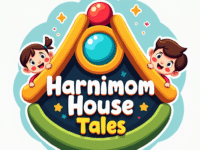
Teach Toddlers Emotional Regulation with a Cozy, Loving Space
Every toddler has big emotions. That’s part of growing up. But when those feelings turn into meltdowns, screaming fits, or frustrated tears, what can we do besides say “calm down” for the tenth time?
That’s where a calm-down corner comes in — not as punishment, but as a safe, loving place where toddlers learn how to manage their emotions with support, not shame.

What Is a Calm-Down Corner?
A calm-down corner is a gentle tool for emotional growth. It’s a quiet, cozy space your toddler can go to when they feel overwhelmed, angry, sad, or just need a moment.
It is not a time-out zone. It is:
- A comfort zone for calming down
- A positive place for emotional expression
- A child-led tool to build self-regulation
In short, it’s a soft place to land — one that teaches emotional safety, not isolation.
What You Need to Set Up a Calm-Down Corner
You don’t need fancy furniture or elaborate tools. A calm-down space can be created with everyday items and a little intention.
Location
- Choose a quiet corner of the bedroom, living room, or playroom
- Avoid isolating them in another room or behind a closed door
- Keep it open and welcoming
Soft & Comforting Items
- Floor cushions or a small bean bag
- A cozy blanket or soft rug
- Stuffed animals, snuggly toys, or a toddler pillow
Visual Aids
- Emotion cards or charts with faces and feeling words
- Mirror to help them recognize facial expressions
- Calm-down strategy chart (e.g., breathe, count, hug, squeeze)
Download Free Calm-Down Visuals – Printables to help toddlers name feelings and choose a coping strategy
Sensory Tools
- Stress balls, fidget toys, or squishy animals
- Pinwheels for deep breathing
- A calm jar (water + glitter or beads)
These sensory items give your toddler something to hold, squeeze, or watch — a physical outlet for emotional release.
How to Introduce the Calm-Down Corner to Your Toddler
1. Model the Space During Calm Times
Say: “Let’s sit here and read together. This is our cozy spot when we need a break.”
Let them associate it with calm, not correction.
2. Use Positive, Empowering Language
“This is where we go when our feelings feel big. It helps us feel better.”
Avoid calling it a “time-out.”
3. Let Them Choose to Use It
Offer it gently: “Would you like to go to your cozy space for a bit?”
Over time, they may go on their own when they’re feeling upset.
4. Practice Through Play
Use dolls or stuffed animals to model calming-down routines.
Example: “Bunny is mad. Let’s help her breathe in our calm corner.”
Storybooks That Teach Self-Regulation
Storytime is a gentle way to introduce emotions and coping skills. These books pair perfectly with a calm-down corner:
1. Zara Finds Her Calm

Zara feels overwhelmed at preschool. Her teacher shows her a quiet space where she learns to breathe, rest, and rejoin play.
Includes: Calm-down cards and breathing visuals.
Shop now!
2. Milo Feels Mad

When Milo the monkey can’t have more banana cookies, he feels mad—really mad! But with deep breaths and mama’s help, he learns what to do with all that fire inside.
Read Milo Feels Mad Story on Harnimom.com
Find Calm & Kindness Books
Real-Life Reflection: What Helped My Toddler Handle Meltdowns
After a stretch of wild tantrums and bedtime battles, I created a calm-down space in a corner of our living room. At first, my daughter wanted nothing to do with it. But I kept modeling it gently: we read books there, talked about feelings there, and slowly, she began choosing it herself.
We added a soft mat, a mirror, her favorite stuffed animal, and laminated emotion cards.
Now she says, “I go cozy corner,” and breathes deep. It’s no longer a place of resistance — it’s her safe space.
Bonus: Free Calm-Down Corner Starter Kit
Download Includes:
- 5 calming strategies made for toddlers
- Visual aid posters (emotions, breathing, and steps)
- Printable cards with emotion faces and coping tools
Download your free kit from Harnimom.com and create a calm space today!
Gentle Parenting Starts With Safe Spaces
Your toddler doesn’t need to be “sent away” to deal with emotions. They need to be guided, seen, and supported.
A calm-down corner gives them the message:
“Your feelings are real, and you are safe here.”
It’s not about avoiding big emotions. It’s about teaching healthy responses, one peaceful moment at a time.
You don’t need perfect tools. You need empathy, consistency, and a soft place to land.
Related Posts You May Love:
- Books That Help Toddlers Name Their Feelings
- Toddler Tantrums: Gentle Story-Based Solutions
- What to Do When Toddlers Say “No” to Everything
Explore more resources, printables, and storybooks at Harnimom.com — your go-to place for toddler emotional growth.













